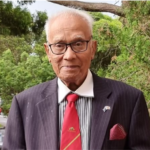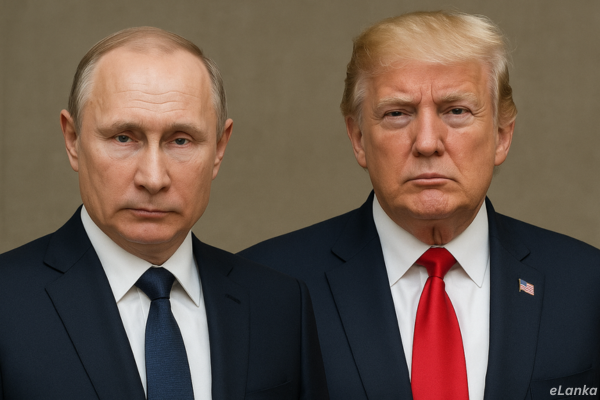From Ceasefire to Peace Settlement: The Alaska Summit and Its Implications – By Dr Harold Gunatillake

Image Source : dhakatribune.com
A critical examination of the outcomes and complexities surrounding the recent Putin-Trump summit
The recent summit in Alaska between Vladimir Putin and Donald Trump was convened with the world’s eyes fixed on the possibility of de-escalation in a longstanding conflict. Expectations ran high that the primary agenda would revolve around negotiating a ceasefire—an immediate halt to hostilities, offering space for further diplomatic engagement. However, the summit took a notable turn from the outset, as President Putin asserted that the conversation would steer away from a mere ceasefire and instead focus on the broader, and arguably more ambiguous, concept of a peace settlement.
Ceasefire Versus Peace Settlement: Understanding the Distinction
A ceasefire is generally recognised as a temporary halt to hostilities, frequently brokered to enable humanitarian aid, negotiations, or to provide a transitional period for a more permanent resolution. It represents a tangible step, which is verifiable and enforceable, and may be conditioned upon specific terms, including the potential application of international sanctions in cases of non-compliance.
Conversely, a peace settlement constitutes a more comprehensive and definitive agreement aimed at addressing the fundamental causes of conflict. While such settlements are often regarded as the ultimate goal, it should be noted that they—particularly when imposed or rapidly negotiated—may solidify certain realities on the ground. For instance, it has been reported that 22% of the Southern and Western territories remain under Russian military occupation. Such arrangements tend to be challenging to reverse or renegotiate, as they frequently establish the new status quo.
Strategic Implications of the Shift in Focus
Trump’s consent to this shift—described as lacking awareness of its ramifications—effectively removes the possibility of secondary sanctions against Russia for any failure to uphold a ceasefire, since no ceasefire agreement is in play. This not only diminishes leverage over Russia but also alters the diplomatic landscape: without the structured, stepwise de-escalation that a ceasefire provides, parties invested in the region—such as Europe and Ukraine—find themselves sidelined. The peace settlement, as outlined, appears to lock in territorial gains for Russia and leaves little room for Ukraine and European actors to negotiate or intervene unless the conversation returns to the topic of a ceasefire. This dynamic generates frustration and uncertainty, leaving the conflict in a diplomatic limbo.
The Zelensky Meeting in Washington: A Pointless Gesture?
Within this context, the planned meeting between Ukrainian President Volodymyr Zelensky and Trump in Washington, DC, is rendered almost moot. The central premise for such a meeting— coordinating a unified stance and perhaps pushing for a ceasefire—has been undercut by Trump’s acceptance of a peace settlement framework. With neither side able to revisit the critical issue of an immediate cessation of hostilities, any diplomatic overture risks appearing performative, rather than productive.
If Zelensky dissents from a peace settlement, it is highly probable that Trump would declare that he would halt negotiations and permit the conflict to persist between the Kremlin and Ukraine.
Current State of Affairs: Limbo and Confusion
The result is a situation mired in ambiguity. The pivot from ceasefire to peace settlement has left the diplomatic process in disarray.
The absence of enforceable agreements, the entrenchment of territorial changes, and the sidelining of key stakeholders all contribute to a sense of stasis and confusion. Until there is clarity about the path forward—and a return to substantive, enforceable negotiations—prospects for a just and stable resolution seem faint.
Volodymyr Zelensky announced that Ukrainian officials are scheduled to meet with their United States counterparts in Saudi Arabia on Monday, following the Kremlin’s confirmation of US- Russia negotiations in that location. During a press conference, Zelensky dismissed Russia’s prerequisites for an impending peace agreement, stating that excluding Ukraine’s NATO membership from discussions constitutes a “significant concession to Russia.”
In summary, the Alaska summit’s unexpected focus on a peace settlement over a ceasefire has fundamentally altered the diplomatic equation. The absence of immediate de-escalation mechanisms and the entrenchment of territorial shifts challenge both the legitimacy and the efficacy of the process. Until the major parties realign their priorities, the prospects for meaningful peace remain uncertain. Europe will also be greatly disappointed by Trump’s failure to adhere to the ceasefire discussions as previously agreed upon.
End

























